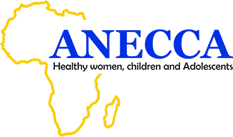- Plot 724/5, Mawanda Road, P.O Box 7484, Kampala Uganda
- +256 393 516266
- mail@anecca.org
ARVs given to children for the first time
The main initial activities of the network were advocacy and training health workers on the care of children affected by HIV/AIDS. In 2002 a casual encounter in Kampala with a Canadian lawyer from British Columbia Province in Canada, who was touring Uganda for the first time, led the lawyer to donate USD 1,000 to buy anti-retroviral drugs for children living with HIV. This money was used to purchase adult tablets of Triomune (a combination antiretroviral drug now discontinued) and the only ARVs available then, from the Joint Clinical Research Centre in Kampala. The first ever ARVs to be given to children in a public health facility in Uganda were given to children attending the Paediatric HIV clinic at Mulago hospital Kampala and we had to break up the adult tablets to give to the children. Working with Dr Sabrina Kitaka, it was very difficult in selecting the first beneficiaries for this initial donation because over 200 children were very sick and eligible for ARVs. Two of the first beneficiaries are alive today and their testimony is available here.
Another key milestone for ANECCA was the workshop on cotrimoxazole prophylaxis for HIV exposed children. It had been recognized that cotrimoxazole could be beneficial for HIV exposed children. The challenge was how to recognize that a child coming for immunization, for example, was HIV exposed and should be given cotrimoxazole. At an ANECCA workshop in Kampala in 2003, participants suggested that marking the child’s immunization card (usually obtained soon after birth with BCG vaccination) with exposure status could increase uptake of cotrimoxazole for this group of children. Of course, there were concerns about increasing stigmatization for the mothers and their children. One of the workshop participants Dr Angela Mushavi, took the idea to Zimbabwe where it was formally studied and found both feasible and acceptable.
